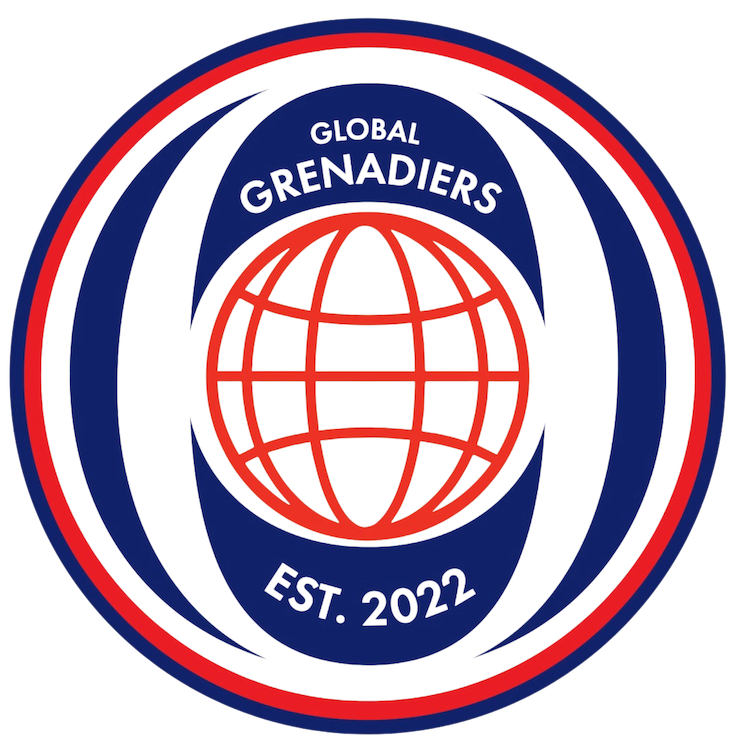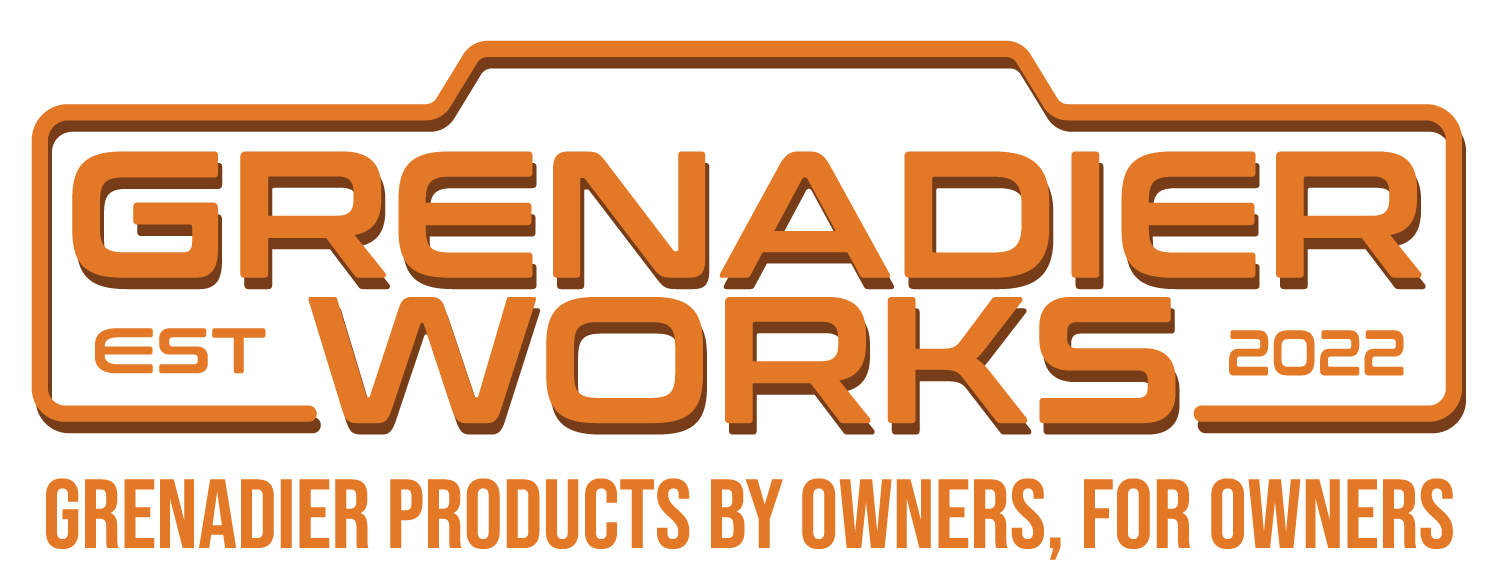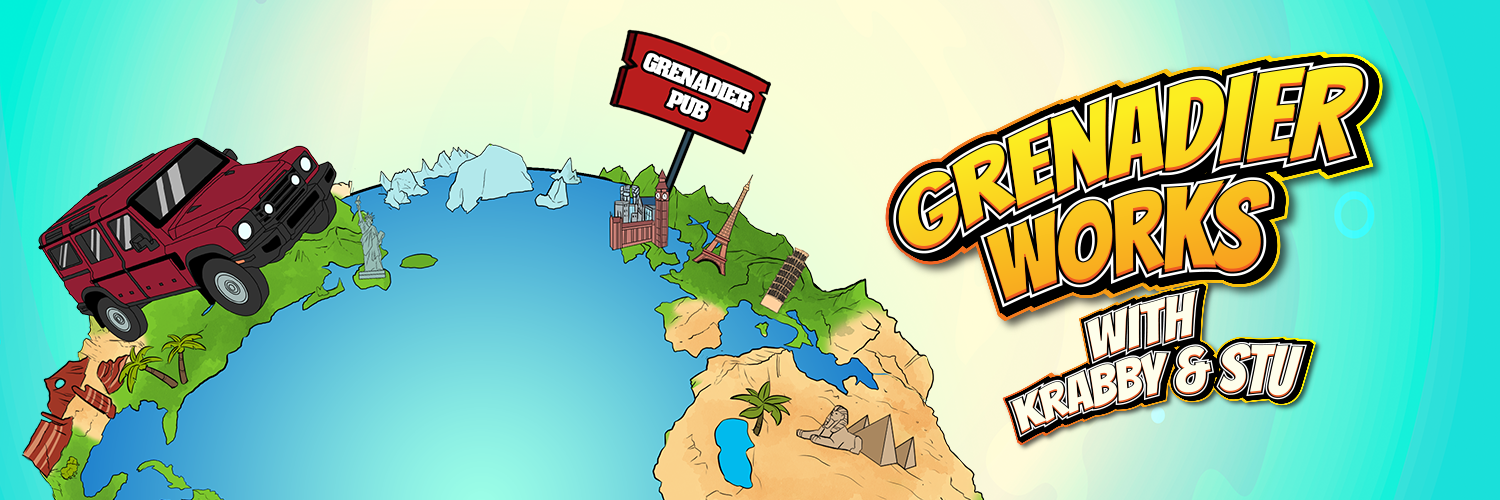The Grenadier Forum
Register a free account today to become a member! Once signed in, you'll be able to contribute to the community by adding your own topics, posts, and connect with other members through your own private inbox! INEOS Agents, Dealers or Commercial vendors please use the contact us link at the bottom of the page.
You are using an out of date browser. It may not display this or other websites correctly.
You should upgrade or use an alternative browser.
You should upgrade or use an alternative browser.
Tyre pressure warning
- Thread starter mfeuerer
- Start date
Offroad -> Temperature Highlight the three bars and selected Set RCP
“Reset Cold Pressure” operation, it can also be dive under Settings Vehicle Functions somewhere too
“Reset Cold Pressure” operation, it can also be dive under Settings Vehicle Functions somewhere too
The range is about 10 psi, for example, If I set the cold tire pressure to 36psi in the morning, after driving for a few hours, I would get high tire pressure warning as they reach 46psi. This tends to happen when the trip started from a colder climate.
When ours we picked up from the dealer, the PSI was set to heavy load. However, we don't often run a heavy load and when we do its just for a few miles. On a longer run down the TPM gave a warning. The car also started to feel a little light on the steering causing a bit of over correction.
Once we realised the PSI was too high, we dropped it down to light load (2 people) and it hasn't come on since. It still rises on use, as all tyres do, but all is good. Plus, the car is more stable and no more overcorrecting.
Once we realised the PSI was too high, we dropped it down to light load (2 people) and it hasn't come on since. It still rises on use, as all tyres do, but all is good. Plus, the car is more stable and no more overcorrecting.
I would venture to guess, actually I’m quite certain, any of you experiencing large pressure fluctuations in their tires have very moist air in those tires. I would suggest getting them filled with nitrogen. You will of course read that nitrogen changes pressure with temperature, yada yada. The reason nitrogen primarily is more stable is it is free from moisture which expands and contracts at MUCH greater rates than air’s other components. This is why aircraft use nitrogen as they can leave the ground at 100 degrees, cruise for hours in temps below -40, then land still having sufficient pressure.
This is always a big to do, people are very opinionated on this subject. I will say this; I have a fleet of on road emergency vehicles with nitrogen in the tires. I own an aircraft with nitrogen in its tires. I have a Grenadier and a couple other personal vehicles with nitrogen in their tires. I do this because it works better in my experience. Period.
Nitrogen can be had at many, but not all tire shops. I believe Costco still has it available. It can also be acquired from welding/compressed gas vendors which are everywhere.
This is always a big to do, people are very opinionated on this subject. I will say this; I have a fleet of on road emergency vehicles with nitrogen in the tires. I own an aircraft with nitrogen in its tires. I have a Grenadier and a couple other personal vehicles with nitrogen in their tires. I do this because it works better in my experience. Period.
Nitrogen can be had at many, but not all tire shops. I believe Costco still has it available. It can also be acquired from welding/compressed gas vendors which are everywhere.
Certainly make a lot of sense to me, next time when I go to Costco tire center, will try it out. There’s also moisture meters for your tires, but they seem to be a bit expensive (https://www.pegasusautoracing.com/p...4fcU02aosv2W7FCKNgVb6LajvXfXJOpBu9y_0K9RTyuHl)
- Local time
- 6:10 AM
- Joined
- Sep 25, 2021
- Messages
- 430
Apart from any moisture in the gas, does nitrogen experience less pressure change than air due to ambient and tire temperature variation (to avoid nuisance TPMS Caution Messages)?I would venture to guess, actually I’m quite certain, any of you experiencing large pressure fluctuations in their tires have very moist air in those tires. I would suggest getting them filled with nitrogen. You will of course read that nitrogen changes pressure with temperature, yada yada. The reason nitrogen primarily is more stable is it is free from moisture which expands and contracts at MUCH greater rates than air’s other components. This is why aircraft use nitrogen as they can leave the ground at 100 degrees, cruise for hours in temps below -40, then land still having sufficient pressure.
This is always a big to do, people are very opinionated on this subject. I will say this; I have a fleet of on road emergency vehicles with nitrogen in the tires. I own an aircraft with nitrogen in its tires. I have a Grenadier and a couple other personal vehicles with nitrogen in their tires. I do this because it works better in my experience. Period.
Nitrogen can be had at many, but not all tire shops. I believe Costco still has it available. It can also be acquired from welding/compressed gas vendors which are everywhere.
Why should normal compressed air contain much humidity? And why does humid air expand more than dry air when warmed up? That doesn’t make sense to me.
Nitrogen for tyres normally contains around 90 % nitrogen and 10 % other gases. (googled that part) that’s not so far away from the 78 % nitrogen we have in fresh air (and normal tyres…). While nitrogen has bigger molecules than oxygen it stays longer in the tyre without diffusion through the rubber. But that is really a very small advantage.
For normal tyres (others than race cars or airplanes) it seems to be quite unnecessary.
Just my opinion.
Nitrogen for tyres normally contains around 90 % nitrogen and 10 % other gases. (googled that part) that’s not so far away from the 78 % nitrogen we have in fresh air (and normal tyres…). While nitrogen has bigger molecules than oxygen it stays longer in the tyre without diffusion through the rubber. But that is really a very small advantage.
For normal tyres (others than race cars or airplanes) it seems to be quite unnecessary.
Just my opinion.
wont make difference....air you breathe is nearly 80% Nitrogen naturally (78%)...and 20% Oxygen and remaining 2% being various other items. If tire pressure set when COLD and not in direct sunlight....and is at proper psi for load...then it shouldnt go higher than 10psi on normal driving. I set mine for the 36psi all around that is listed for normal 3 passenger driving. Wish was easy to modify for when loaded with winch, recovery gear, camping gear, etc.... I am guessing is dealer adjustable since they recommend the three different pressures based on load out of vehicle.... I wouldnt waste money on nitrogen in tires....Apart from any moisture in the gas, does nitrogen experience less pressure change than air due to ambient and tire temperature variation (to avoid nuisance TPMS Caution Messages)?

The Air We Breathe - Sigma Earth
Oxygen, of course, is the most critical component of the air we breathe. However, air consists majorly of two elements – oxygen (21%) and nitrogen (78%)
 sigmaearth.com
sigmaearth.com
Remember that the IG allows you to adjust when the TPMS alert appears. It's in the settings
Various physics gas laws consider your moisture law invalid.I would venture to guess, actually I’m quite certain, any of you experiencing large pressure fluctuations in their tires have very moist air in those tires. I would suggest getting them filled with nitrogen. You will of course read that nitrogen changes pressure with temperature, yada yada. The reason nitrogen primarily is more stable is it is free from moisture which expands and contracts at MUCH greater rates than air’s other components. This is why aircraft use nitrogen as they can leave the ground at 100 degrees, cruise for hours in temps below -40, then land still having sufficient pressure.
This is always a big to do, people are very opinionated on this subject. I will say this; I have a fleet of on road emergency vehicles with nitrogen in the tires. I own an aircraft with nitrogen in its tires. I have a Grenadier and a couple other personal vehicles with nitrogen in their tires. I do this because it works better in my experience. Period.
Nitrogen can be had at many, but not all tire shops. I believe Costco still has it available. It can also be acquired from welding/compressed gas vendors which are everywhere.
Also, the main reason aircraft (usually large aircraft) use nitrogen in their tyres is because large aircraft tyres get very very hot, due to heat from braking friction being transferred to the tyre.
This makes the tyre very hot, much hotter than a car tyre. Now, if you have 20% oxygen in that tyre, at high pressure (say 150psi), it will oxidise the tyre and lead to break down of the tyre compound.
If you fill the same tyres with nitrogen, this does not occur.
Nitrogen for car (or Grenadier) tyres is BS, and a complete waste of money.
No, both are gases that follow same physics.... does nitrogen experience less pressure change than air due to ambient and tire temperature variation (to avoid nuisance TPMS Caution Messages)?
I use snake oil when I can't get hold of argon
https://air-source.com/blog/how-argon-is-used-in-luxury-car-tires/
https://air-source.com/blog/how-argon-is-used-in-luxury-car-tires/
Apparently spending money on useless things is good for the economy.
Argon stiffens the sidewalls?
So it’s of no use for off road driving.
Argon stiffens the sidewalls?
So it’s of no use for off road driving.
People will be inhaling it nextArgon stiffens the sidewalls?
I'm highly likely to just remove the TPMS sensors next time I change tires and just put all sensors under the rear seat. It's just not programmed well and more of a nuisance. I've driven all this time without ever having TPMS and I have only seen it as a negative so far with the Grenadier.
One observation i have is that the Grenadier is quite a heavy thing so if your pressures are on the low side you will see bigger temperature increases as the sidewalls flex more, higher temperature leads to higher pressure.. For road use I run mine in the 40's . 48psi in the all terrains and 42 in the muds. they don't get as hot as they do if you're running 35...
Mine is a fully loaded trialmaster and it weighs over three tons when we are towing.One observation i have is that the Grenadier is quite a heavy thing so if your pressures are on the low side you will see bigger temperature increases as the sidewalls flex more, higher temperature leads to higher pressure.. For road use I run mine in the 40's . 48psi in the all terrains and 42 in the muds. they don't get as hot as they do if you're running 35...
Ive been running mine at 37 psi in all tyres unloaded, then 40 front and 44 back when towing the caravan.
Do you put 44 front and 48 rear, or just 48 all round? I might try that if it's a good combo next time out.
I run 48 all round. I weighed it recently, I'm 1600kg rear and 1450 ish front.
I tried this, unfortunately did not work. I also ried locating them in each corner of the vehicle, again did not work. I had to fit them in the tyres themselves. Maybe I was just unlucky.I'm highly likely to just remove the TPMS sensors next time I change tires and just put all sensors under the rear seat. It's just not programmed well and more of a nuisance. I've driven all this time without ever having TPMS and I have only seen it as a negative so far with the Grenadier.
Re pressures. I'm 36 all round all year. I find works ok in the soft stuff if a little warm on the black.
Similar threads
- Replies
- 3
- Views
- 171
- Replies
- 5
- Views
- 410



